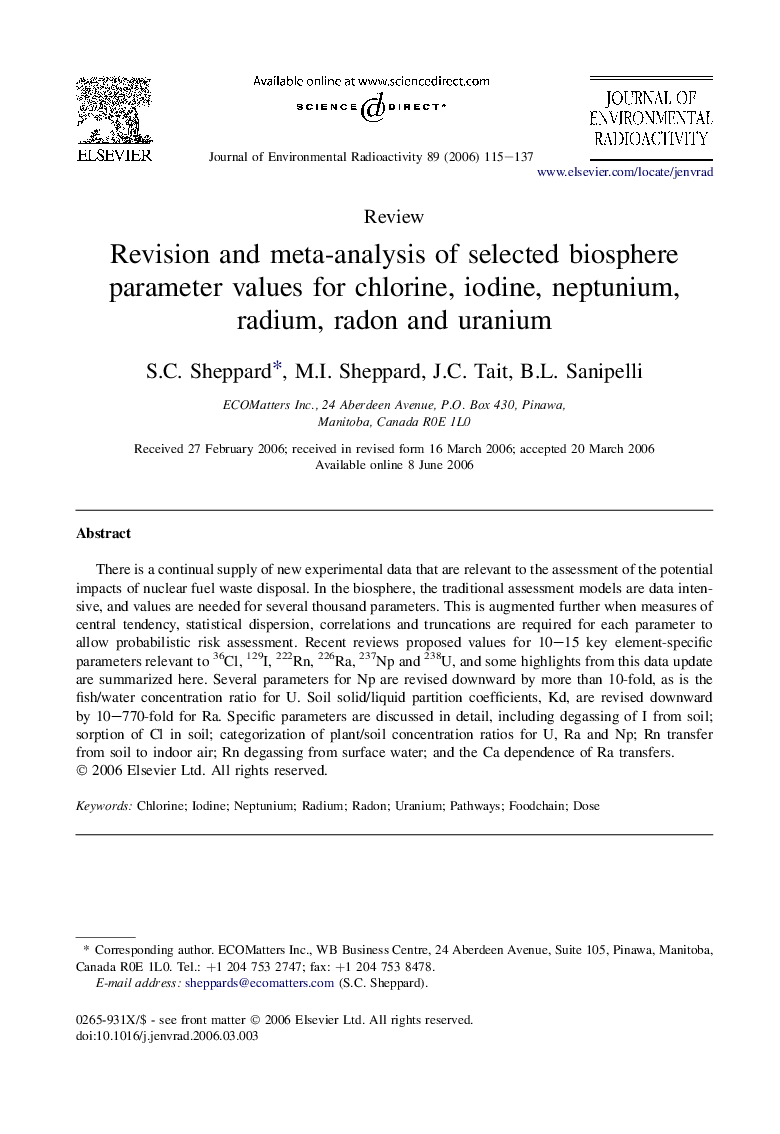| Article ID | Journal | Published Year | Pages | File Type |
|---|---|---|---|---|
| 1739725 | Journal of Environmental Radioactivity | 2006 | 23 Pages |
There is a continual supply of new experimental data that are relevant to the assessment of the potential impacts of nuclear fuel waste disposal. In the biosphere, the traditional assessment models are data intensive, and values are needed for several thousand parameters. This is augmented further when measures of central tendency, statistical dispersion, correlations and truncations are required for each parameter to allow probabilistic risk assessment. Recent reviews proposed values for 10–15 key element-specific parameters relevant to 36Cl, 129I, 222Rn, 226Ra, 237Np and 238U, and some highlights from this data update are summarized here. Several parameters for Np are revised downward by more than 10-fold, as is the fish/water concentration ratio for U. Soil solid/liquid partition coefficients, Kd, are revised downward by 10–770-fold for Ra. Specific parameters are discussed in detail, including degassing of I from soil; sorption of Cl in soil; categorization of plant/soil concentration ratios for U, Ra and Np; Rn transfer from soil to indoor air; Rn degassing from surface water; and the Ca dependence of Ra transfers.
